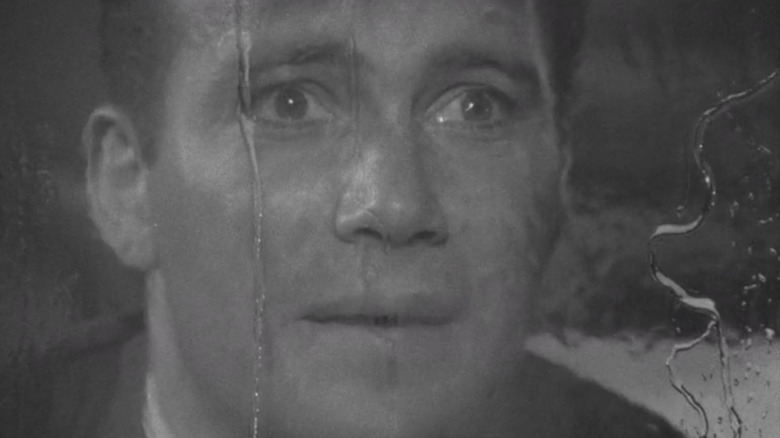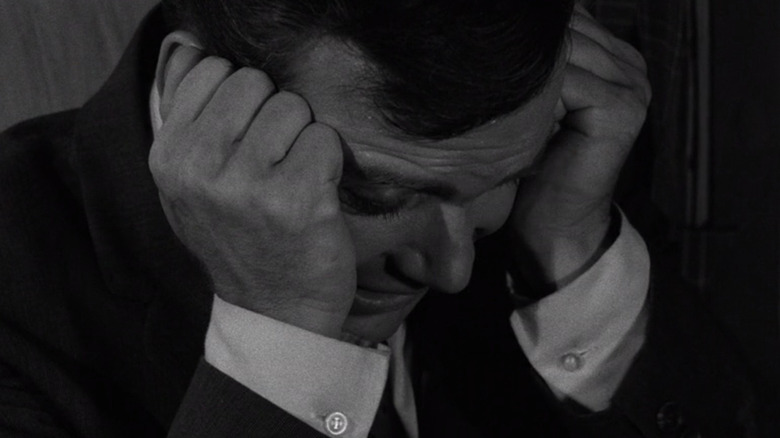William Shatner's Twilight Zone Episode Came With A Side Of Intense Sleep Deprivation
If you were to make any list of the best episodes of Rod Serling's seminal sci-fi horror series "The Twilight Zone," it would most assuredly include the season 5 episode "Nightmare at 20,000 Feet," and if you went out and took a poll, this would probably be the episode most would call their favorite. If it isn't their favorite, it's certainly the one most people point to when they think about the show. I would have to agree with that, even if it's not my personal favorite (that would be "The Eye of the Beholder").
Its recognizability is for several reasons. For one, the episode stars a pre-"Star Trek" William Shatner, and genre fans will always gravitate towards the stars they recognize and love when looking back at older media. The episode also received a terrific reinterpretation from director George Miller in "Twilight Zone: The Movie," in which the Shatner role was played by the great John Lithgow. But more than anything, "Nightmare at 20,000 Feet" still resonates as much today as it did back in 1963 because the episode is just a great premise with exceptional execution to maximize paranoia and terror.
With that level of execution, it makes sense then that it has a director of the caliber of Richard Donner at the helm. This is the man who directed "Superman," "Lethal Weapon," and "The Omen," a terrific journeyman who knows how to get a script and satisfyingly execute it without the need for frills. You need someone that secure in their skills to handle a production like this, because as it happens, "Nightmare at 20,000 Feet" could not have been made under a more pressure cooker situation.
Half the shooting days
Network television production has always been fast. Typically, a shoot for a single-camera episode is just one week, and in the case of a live multicam show, they spend those first four days rehearsing before performing it live on the fifth day. After all, they have to crank out 22 or so episodes a year, so they can't afford to be overly precious about what they're making. In the case of "Nightmare at 20,000 Feet," the original intention was for a four-day shoot. Yes, it's one day less than a week, but the episode almost entirely takes place inside one airplane set. The need to change locations or build new things on a soundstage wasn't necessary.
The network must have thought that would be a pretty simple shoot, so they made the decision to shorten the production schedule for the episode. After the passing of Richard Donner, William Shatner tweeted in remembrance of the director about how hectic making that episode was:
"It was chaotic; it was supposed to be a 4 day shoot & they cut it in half. They kept us there all night on the 2nd day to finish it. We were all sleep deprived."
Shooting a half-hour episode of television in two days is insane, and any network executive or producer who thought that was a good idea probably should've been fired. However, that manic energy can be felt in the episode itself and certainly played a major factor in how successfully it renders Shatner's character's mental demise. I don't like the idea that you have to create the same circumstances on set to achieve something on film, but I can't deny that "Nightmare at 20,000 Feet" has a magic in it that the truncated production generated.

